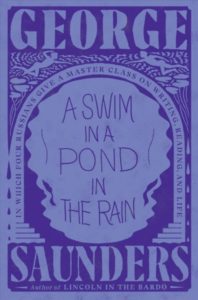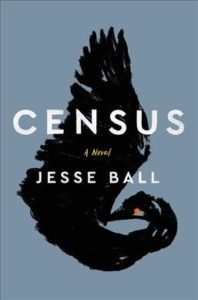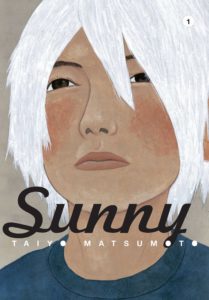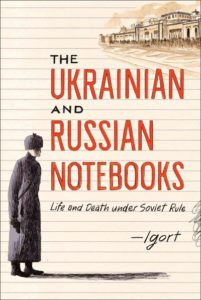A Swim in a Pond in the Rain (In Which Four Russians Give a Master Class on Writing, Reading, and Life)
by George Saunders
[Book]

view/request
Reading this book is like getting to take author George Saunders’ MFA writing course on the Russian short story, as he takes you through reading seven of his favorites by Russian giants Tolstoy, Chekov, Gogol, and Turgenov. And while this might seem like a daunting hurdle, or something only helpful for aspiring writers – Saunders’ engaging examinations into how these greats are doing what they do, make for an accessible exploration into the importance of fiction and in turn: a revelatory experience of becoming a better reader AND an inspiration for finding one’s voice in any form of expression (not just writing). A non-fiction extension from what Saunders achieves with his own award winning fiction, A Swim in a Pond in the Rain is appearing on many “Best of…” lists for good reason – an essential read for anyone who loves stories!
Reviewed by Josh
Tagged: Literary criticism, Non-fiction, Short stories
Census
by Jesse Ball
[Book]

view/request
How does one convey a sense of understanding about something that is significantly hard to describe – whether due to its ephemeral qualities, or because the subject is profoundly personal? Author Jesse Ball writes about this challenge in the introduction to his newest book Census, stating that he “realized I would make a book that was hollow,” when trying to figure out how to write about his deceased older brother. Ball makes an astounding attempt by writing around the difficulty being investigated, and so creates a contour by which details emerge and a sense of the indescribable can be gleaned.
A book perhaps essentially about empathy, on both a personal and cultural level – prescient of our current social atmosphere where some philosophy on understanding others might be a bit lacking. Written with simple yet poetic prose, which will likely garner the re-reading of passages when finding yourself bowled over by the dense sentiments embedded within a short paragraph. And an impressive amount of language pushing, which holds up against the steep standards placed by the comparisons to Borges and Calvino that Ball has received. Truly otherworldly writing in the best ways that those giants of literature have shown to be possible.
A road trip from towns A to Z with tattooing and physiotelepathy – this is my current favorite book of 2018!
Reviewed by Josh
Tagged: Experimental, Families, Fiction, Literary fiction
Sunny
by Taiyo Matsumoto
[Graphic Novel]

view/request
Eisner award winner Taiyo Matsumoto’s semi-autobiographical account of the Star Kids orphanage is hands down the greatest unsung hero of contemporary manga currently being published. Why this book has not shown up on more “Best Of” and “Required Reading” lists is a puzzle, and I can only hope that this small dispatch might somehow get these books into more hands. The 6 volumes of Sunny (5 currently available – part 6 to be published any day now!) follow the day to day happenings at the Star Kids home – with each chapter showcasing one of the disparate, displaced children and their caretakers. These are mostly simple stories: the new kid tries to settle into his new home, dinner time arguments about what to watch on t.v., the fallout from a white lie about a cup… but what makes them special is Matsumoto’s ability through his poetic mastery of the language of comics to instill something stronger than empathy – the reader is actually transported into the hazy logic of youth through the combination of pictures and words.
The following chapter titles, one from each volume, hint at the simple majesty at work:
Chapter 2: “Why’re Dracula’s fingernails so long?” “‘Cause he doesn’t cut ’em.”
Chapter 12: “The city always seems angry.” “Like it’s shoutin’ ‘HEY!’ or somethin’?”
Chapter 17: “If I had my own department store, I’d make every floor for toys.” “That’s just a big toy store.”
Chapter 24: “Auoooh.” “Waaaaa.”
Chapter 29: “You think a rainbow’s hot if you touch it?” “The blue part’s gotta be cold.”
These slice of life vignettes somehow manage to capture the elusive feelings and perspective of a child – treating all of their melancholy and frustration, as well as their elation, with an uncanny sympathetic tone – all through his evocative illustration style combining scratchy pen with spots of ink wash. The ambivalence of a runny nose, the proprietary daydream space of a broken down car (a Nissan Sunny 1200, for which the series takes its name), and the powerfully charged relic of a mother’s hand salve tin are all presented with what could only be considered magic. At some moment while reading (possibly during a characters’ first foray into shoplifting, or while everyone is scurrying to get out of an oncoming storm), through some sort of literary sleight of hand you’ll realize your heart has just been inextricably joined to the Star Kids’ lives and will potentially need some mending when you flip closed the last page.
Beautifully designed and printed as part of Viz’s Signature Editions, these small hardcovers are given the proper presentation to contain the deeply affecting stories held within.

Reviewed by Josh
Tagged: Coming-of-age, Families, Fiction, Friendship
The Ukrainian and Russian Notebooks
[Graphic Novel]

view/request
New graphic nonfiction by Italian comics artist Igort!
Over the past few decades only a small handful of Igort’s work have been translated into English, despite his status as an award winning graphic novelist and the founder of esteemed publishing house Coconino Press, so a new arrival of his to our shores is always a reason for excitement.
For his newest graphic novel Igort spent two years in Ukraine and Russia collecting stories from survivors and witnesses of life under Soviet rule. Focusing on the government sanctioned famine of 1932, and the assassination in 2006 of journalist and human rights activist Anna Politkovskaya, this collection of deeply affecting interviews is rendered in Igort’s stark yet compassionate illustrative style. A single opening panel just telling the year can pack as much emotion and connotative information as some other artist’s entire novels, simply through his layering of images and line work — a true master of the craft.
Definitely not an easy read in terms of its direct depictions of human atrocities, but certainly one of the most important graphic novels of the year, humanizing events that have mostly been told through a skewed western lens, while also connecting current turmoil in the region to its tumultuous past, helping create a more complete and honest history.
Reviewed by Josh
Tagged: Comics, Graphic nonfiction, History





